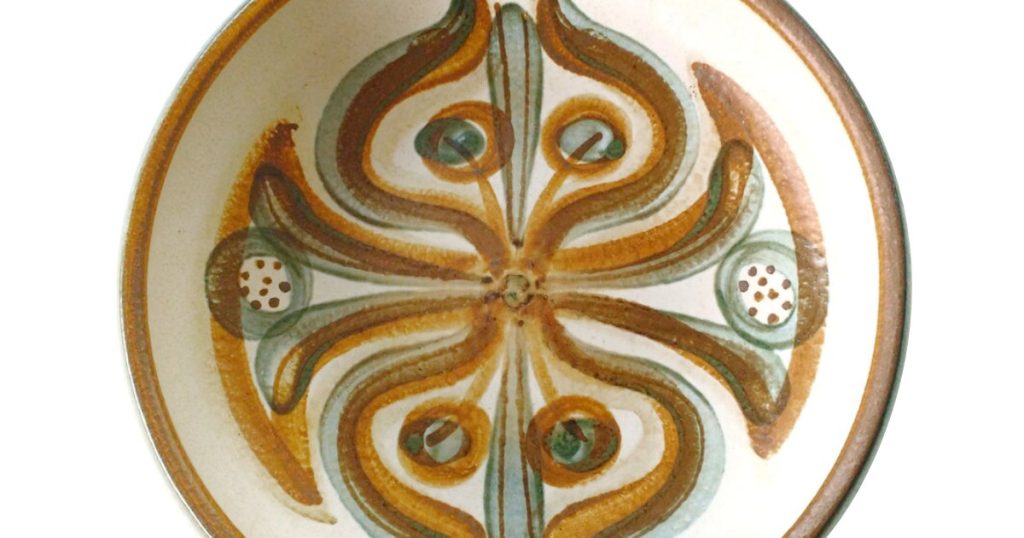
Noomi Backhausen
A Danish Pottery Pioneer
Noomi Backhausen’s charming and unique pottery creations may have caught your eye if you love vintage and retro Danish ceramics. She was one of Denmark’s leading ceramic designers during the 20th century, and her works are still sought after by collectors and enthusiasts today. However, despite her achievements and influence, there is very little information about her on Wikipedia or other online sources. This is one of the main reasons for this article, to celebrate her life and legacy, and to introduce her to a wider audience who love design with personality.
Early Life and Education
Noomi Backhausen was born on December 29, 1938, in Copenhagen, Denmark. She grew up in a creative family, as her father was a painter and her mother was a textile designer. She showed an interest in art from an early age, and attended the School of Arts and Crafts in Copenhagen, where she studied ceramics under the guidance of renowned potter Gutte Eriksen. She graduated in 1962, and soon after, she married fellow ceramicist Jens Quistgaard, who was the co-founder of Dansk Designs.
Noomi Backhausen was influenced by various artistic movements and styles, such as Scandinavian folk art, Art Nouveau, Art Deco, and Bauhaus. She also drew inspiration from nature, especially from the landscapes and flora of Bornholm island, where she spent many summers as a child. She developed a distinctive aesthetic that combined organic shapes, geometric patterns, and textured surfaces.
Career at Søholm
In 1966, Noomi Backhausen joined the Søholm factory on Bornholm island, which was one of the oldest and most prestigious ceramic manufacturers in Denmark. She worked there until 1990, and during that time, she designed some of her most popular and iconic works. She mainly focused on wall plaques, lamps, vases, and bowls, which were produced in large quantities and exported worldwide.
One of her signature products was the lamp series called “Stentøj”, which means “stoneware” in Danish. These lamps were made of glazed stoneware with relief decorations that resembled abstract flowers or leaves. They came in various shapes and sizes, and were available in earthy colors such as brown, green, blue, or yellow. They created a cozy and warm atmosphere when lit up, and were perfect for adding a touch of vintage charm to any interior.
Another product that made Noomi Backhausen famous was the wall plaque series called “Relief”, which has the same meaning in Danish. These wall plaques were also made of glazed stoneware with relief decorations that depicted various motifs such as animals, birds, fish, or human figures. They were often arranged in groups or series that formed a narrative or a theme. For example, one series showed different scenes from the life of Jesus Christ, while another showed different types of fish. These wall plaques were not only decorative but also expressive and artistic.
Noomi experimented with different techniques and materials, such as slip casting, hand building, terracotta clay, porcelain clay, and enamel paint. She always paid attention to detail and quality, and ensured that her products were both functional and beautiful.
Independent Studio
In 1991, Noomi Backhausen left Søholm and established her own studio on Bornholm island. She continued to create ceramics until her death in 2011. She worked mostly on sculptures, tiles, and reliefs that were more personal and artistic than her previous works. She also collaborated with other artists and craftsmen on the island, such as glassblowers, woodcarvers, metalworkers, and painters.
Some examples of her later works include:
- A series of sculptures called “The Four Seasons”, which represented the changing seasons on Bornholm island through different colors and shapes.
- A series of tiles called “The Zodiac Signs”, which depicted astrological symbols with stylized animals and plants.
- A series of reliefs called “The Seven Deadly Sins”, which illustrated the vices of human nature with humorous and ironic images.
Legacy and Influence
Noomi Backhausen died on May 21st 2011 at the age of 72. She left behind a rich and diverse body of work that reflects her talent and vision as a ceramic artist. She received several awards and honors for her work during her lifetime such as:
- The Danish Crafts Prize in 1978 and 1986 for her lamps and wall plaques.
- The Bornholm Cultural Prize in 1999 for her contribution to the island’s artistic heritage.
- The Danish Design Award in 2004 for her lifetime achievement in ceramic design.
Noomi Backhausen’s works are still admired and collected by many people around the world, who appreciate her unique style and craftsmanship. Her works can be found in various museums and galleries, such as:
- The Danish Museum of Art and Design in Copenhagen, Denmark.
- The Bornholm Art Museum in Gudhjem, Denmark.
- The Victoria and Albert Museum in London, UK.
- The Smithsonian Institution in Washington, DC, USA.
Noomi was a master of Danish ceramic design, who left a lasting impression on the history of art and culture. She was a woman who followed her passion and expressed her creativity through clay. She was a source of inspiration and joy for many generations of pottery lovers. She was Noomi Backhausen, a Danish pottery pioneer.
